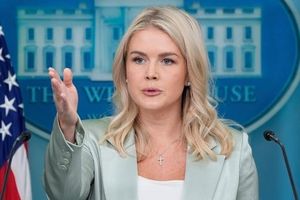China's economy, once the envy of the world, is now grappling with significant challenges, prompting the government to rethink its strategies to stabilize growth. The shifts, particularly evident from late September 2023, have sparked widespread discussions about the nature and necessity of these policy changes.
Recent economic developments have led many to ask three pivotal questions: Why are these policy changes happening now? Are these adjustments temporary fixes or part of a larger, transformative strategy? And what can we expect moving forward? The meeting of the Political Bureau of the Chinese Communist Party on September 26 hinted at the rationale behind the latest efforts. It highlighted the economy's struggles to meet its annual growth target of around 5% for both the second and third quarters of the year, alongside the less-than-expected outcomes from previous policies, especially those concerning the real estate sector. Local governments are facing fiscal pressures, and the global economic environment, particularly interest rate adjustments by the United States, has created additional challenges and opportunities for policy recalibration.
A consensus is forming among stakeholders about the necessity to stabilize the real estate sector and initiate reforms to support the capital market as key areas to restore confidence and spur domestic demand. This focus stems from the belief, increasingly shared among policymakers and economic analysts, that both sectors are not just important for long-term institutional reforms but are immediate priorities necessary for recovering the economy.
But are these measures merely stopgap solutions? There is skepticism surrounding the long-term effectiveness of these initiatives. The introduction of various policy tools since late September raises the question of permanence versus temporary relief. Among the strategies introduced are those aimed at stabilizing real estate markets and boosting sentiment within the stock market. The pivotal shift lies not just in the tools themselves, but also in the underlying mindset: strengthening the real estate sector and the capital market has become increasingly seen as foundational for restoring public confidence, which is, of course, integral for raising domestic consumption.
Intriguingly, measures such as the Securities, Funds and Insurance Companies Swap Facility are part of this new approach, encouraging financial institutions to pledge assets for financing and investments. This should aid listed companies reduce their share prices which have been persistently low. This is notable, considering nearly 800 out of over 5,000 listed companies were trading below their net asset values prior to these initiatives. Acknowledging and addressing this pricing distortion is seen as pivotal to restoring proper functionality to China’s capital markets.
Another notable development is the establishment of a joint working group dedicated to the treasury bond market, signaling significant changes to China’s fiscal and monetary policies. This initiative reflects China's commitment to modernizing its central banking framework, emphasizing interest rate marketization and the deepening of the government bond market.
Yet, contrary to the perception among some analysts viewing current efforts as simple, temporary stimuli to buttress the economy against immediate problems, these measures are likely intended to enact considerable changes. The goal goes beyond maintaining existing market structures to actually restructurings of systems and behaviors among market participants. Key initiatives aimed at reorienting investor behavior and resolving local government debt signal substantial upcoming reforms.
Looking ahead, stabilization efforts seem to be yielding some success, particularly within first-tier real estate markets, which officials now suggest are starting to find their footing. The focus of economic policies appears to be shifting from direct stimulus to more structural changes, like enhancing social welfare strategies aimed at improving household income rather than merely boosting consumer goods trading.
This pivot reflects recognition among planners of changing structures within the economy, seeking not just to react to situations but to improve the system's entirety to promote longevity and resilience. Incremental policies are expected to continue rolling out, increasingly focusing on fostering consumption through sustainable income growth and repairing household finances.
Overall, what is transpiring within the Chinese economy is increasingly complex, with the interplay of immediate measures and long-term strategy shaping the outlook. Changes suggest purposeful maneuvering beyond practical reactions to economic stresses. The upcoming months will be pivotal for both China and its partners as they navigate this shifting terrain.
Yet China is grappling with internal unrest as well. The economic pressure has spurred some local governments to engage in dubious practices. Reports have surfaced claiming local officials are shaking down private businesses under pretexts like unregulated enforcement actions. This bizarre tactic, dubbed "distant water fishing," is defined by poorer inland regions targeting more prosperous coastal businesses, accusing them of fraud and coercing them through legal harassment to pay hefty fines and settlements.
A government memo suggested nearly 10,000 companies had been victimized by this cross-jurisdictional law enforcement. Complaints stemmed from the central level of government, promising to standardize enforcement and curb unauthorized profit-driven practices. High-profile cases have surfaced where successful entrepreneurs faced severe reprisals under these unjust enforcement measures, raising many eyebrows about the overarching health of legal and business practices within China.
Meanwhile, local governments must contend with their tightrope walk balancing between strengthening economic recovery and scrutiny from the central government about their practices. Amid these challenges, the nation's markets await clarity on the direction of both governmental intent and efficacy of these monetary policies aimed at reviving confidence and stability amid growing uncertainty. The rest of the world watches, too, as the sustained presence of strong leadership will be pivotal for ensuring China transitions smoothly through the rough waters of its present economic woes.



